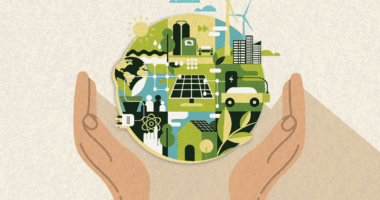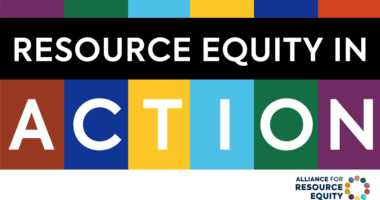Educators Speak Up About How to Teach Climate Change
April is Earth Month — and this year’s awareness efforts come just weeks after the release of the latest international report that paints a dire picture of the future of our planet. While the report offers warnings of catastrophe caused by global climate change, there is still time to shift course. Climate change affects everyone, but, according to the EPA, it disproportionately impacts indigenous communities, Black and Latino communities, and low-income communities, because these groups are more likely to live and work in spaces that are more exposed and vulnerable to climate hazards. Actions taken today — or failed to be taken — could radically reshape the planet for centuries to come. Change will come via young people — and it starts in school.
Teachers and students across the nation, in both red and blue states, say they want their classrooms to include more information on climate change, sustainability, and environmental health. Yet a national survey of educators found a few key barriers: Schools and districts haven’t made climate change a priority; educators lack interdisciplinary training and material; administrators fear parental pushback; and content is often relegated to middle school science.
To see what this looks like in the classroom, I asked a few teachers in Florida, Michigan, Texas, and the District of Columbia for their thoughts on teaching climate change. They reported that their students get much of their information, as well as misinformation, through social media and often struggle to understand what is real or fake. Here are some other takeaways:
Many students have general anxiety around climate change
Children express frustration that world leaders aren’t doing enough. An 11th grade social studies teacher in West Bloomfield, Michigan, noted, “Students would rather not spend class time learning about climate change because to many of them, it’s just reiterating how messed up the future is for them. Many of them strongly feel that their individual actions won’t change any of the harmful ‘big picture’ forces that are linked to climate change.”
Students who are excited by science are eager to be part of the solution for climate change
An eighth-grade science teacher in San Antonio tells her class, “You could be that person. In the future, clean water can be a challenge, and we may have to problem solve to make sure we have clean water. It’s our job — me and you — to figure out the water situation.” However, she said she rarely has the space or time to embed problem solving around climate change into her lessons.
Although climate change is in many state standards, teaching about climate change is often limited
And if a teacher isn’t personally knowledgeable about or interested in environmental issues, they may not expand beyond the limited standards. When teachers can adapt and relate content on climate change to current events, students get curious. An eighth-grade science teacher in D.C. said, “I want them to have facts and critical thoughts towards this massive event that is happening to us. They need to know environmental pollution is where they are living and unjust.” In this way, experiential, local, relevant, action-oriented curriculum can help engage and empower students.
Students should learn about climate change when they are younger
When children are taught young — starting in grade school — teachers can give them opportunities to explore, come up with questions, and be curious about their communities. In most states, science is on the backburner until it is first tested in fourth or fifth grade, potentially losing a key moment to get students to develop science identities.
Beyond middle grades science, courses like environmental science in high school may give more students an opportunity to dig into climate change. However, a teacher in Tampa, Florida shared, “The reality is that many of my students won’t make it to AP Environmental Science. That has nothing to do with them, but it is because of policies that will keep them out. Because of this, we can’t count on a specialized high school class to inform students about the realities of climate change.” Rather than relying on middle school science to be the only time students learn about climate change, some states like New Jersey are including climate change content across grade levels and subject areas, starting in kindergarten.
These teachers’ experiences paint a concerning picture for America’s future, especially considering the disproportionate impact of climate change and the need for environmental justice for low-income communities and communities of color. At the same time, each teacher shared that their students desire more engaging and relevant content in the science classroom — experiential, interdisciplinary, and action-oriented climate change curriculum may be a place to start.
This aligns with findings from an upcoming Ed Trust brief that middle school is a significant time for youth to connect with STEM, develop a STEM identity, and get students interested in STEM careers. Students are more likely to feel like they belong in the science classroom when their lessons are relevant to their own lives and what happens in their communities. Middle school STEM classrooms are a crucial time to activate students and classrooms to be champions of change.





